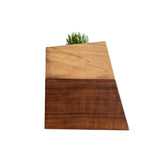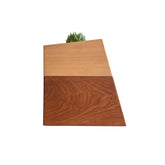How to Shape Our Pet Urns and Cremation Jewelry

Losing someone you love—family or a beloved pet—can leave you feeling adrift. Alex and Taylor, living in Japan, felt this deeply. After saying goodbye to people and animals they loved, they looked for ways to remember them in daily life. They noticed most pet urns and cremation jewellery felt cold and clinical. Many looked like things you should hide away, not keep close. That gap led them to start Hushsoul—to turn memorial pieces into quiet works of art that fit naturally at home. Their search took them across Japan, China, Greece, and Italy to learn how different cultures honour the dead and to draw inspiration from centuries-old rituals.
From Grief to a Clear Design Mission
Our starting point is simple: remembrance should feel warm, human, and beautiful. We asked ourselves: Why do memorial items often look like lab equipment? Why can’t a pet urn be something you’re proud to display? Why can’t cremation jewellery feel like true jewellery and also carry meaning?
These questions became our mission—design pieces that safely hold ashes while honouring the love, stories, and gentle rituals families keep after a loss. We favour soft lines, lovely textures, and honest materials—polished wood, ceramic, and finely finished metal—over hard, shiny surfaces. We want pieces that invite touch, carry dignity, and age with grace.
Learning from Older Traditions
To create memorials that speak across cultures, we studied how different societies face loss and remembrance. We travelled through Japan, China, Greece, and Italy, exploring funeral customs, craft methods, symbols, and the “language” of materials. These experiences shaped our design and showed us how art can soothe grief, how rituals support memory, and how small, caring gestures comfort families.
Below are the moments that changed us most—and how they live inside our urns and jewellery today.

Japan: Impermanence, Care, and the Bone-Picking Ritual
In Japan, cremation is the norm. Space is tight in cities, but there’s also a deep spiritual layer from Buddhism and Shinto. Many families take part in kotsuage (the bone-picking ceremony). After cremation, close relatives use long chopsticks—traditionally one bamboo and one wood—to pick bone fragments from the ashes. Bones are placed in the urn in a set order, from the feet up to the skull, so the person “rests upright.” The second cervical vertebra, called the “throat Buddha” (nodobutoke), is placed last by the closest relative.
Passing items from chopsticks to chopsticks is taboo in daily life, which underlines how solemn this ritual is. Watching kotsuage changed how we think about size, touch, and participation. We designed compact pet urns that help people place ashes carefully. We focused on smooth edges and gentle closures to support small, private rituals at home. We also drew on wabi-sabi and mujo (impermanence): calm finishes, breathing proportions, and quiet details.
What we bring into our design from Japan
- Texture and touch. Surfaces should soothe—polished wood, velvet-soft ceramics, satin metal.
- Small yet dignified. Compact forms suit mantels, shelves, and niches without shouting for attention.
- Built for ritual. Openings, seals, and simple funnels make transferring ashes private, easy, and respectful.
China:Evolving Customs and Keeping Bones Together
Chinese funeral practices vary by region and tradition. With urban growth and land pressure, cremation has increased, while some rural areas keep earth burials. In parts of the south, families may later retrieve remains, clean and dry the bones, and place them in special jars or boxes—customs linked to ancestor honour and feng shui. In big cities, many families store ashes in columbariums; some keep a small portion for memorial jewellery or scatter a part in nature.
From temple walls near the Himalayan foothills to modern columbariums, we kept seeing blessing motifs—symbols of protection, compassion, and an unbroken bond between the living and the dead. We weave these motifs into subtle carvings on selected urns and jewellery, letting the meaning whisper rather than shout.
China’s influence on our work
- Symbolic language. Quiet blessing patterns set into metal, ceramic, and wood.
- Flexible forms. Grief is personal; our line includes table-top urns, pendants, and small travel keepsakes for a few ashes or fur.
- Everyday altars. We encourage a small home corner: a compact urn beside photos, a collar, a toy, or flowers—an intimate place of memory.
Greece: Tradition, Scarcity, and the Courage to Change
Cremation only became legal in Greece in 2016 and is still uncommon, influenced by Orthodox preferences for burial. Because grave space is limited, remains are often exhumed after a few years and bones moved to ossuaries. We met families who sent loved ones abroad for cremation before local options existed. It reminded us that rituals are a living conversation, not fixed rules.
Greece also taught us geometry. Studying classical geometry and Platonic solids—the cube, tetrahedron, dodecahedron—we fell in love with facets, symmetry, and light. Our faceted pet urns honour classical ideas while staying clean and modern.
What Greece gave us
- Pure geometry. Faceted forms and clear planes carry quiet strength and timeless balance.
- Light and shadow. Alternating matte and gloss, like temple stone catching daylight—edges defined but never harsh.
Open dialogue. Design can help families consider new memorial choices while respecting elders’ teachings.

Italy: Material Poetry and a Modern Cremation Culture
Shaped by Catholic tradition, Italy’s view of cremation has shifted over time. The Church once banned it, then allowed it in the 1960s, still encouraging ashes to be kept reverently in sacred places. In recent years, more families choose cremation; columbariums, cremation chapels, and glass displays have become more common.
In Carrara and Florence we studied fine stone and metalwork. The lesson wasn’t to make things showy, but to let materials speak—stone that feels sculptural, brass that warms to the touch, finishes that invite the hand. We embraced secular elegance: neutral tones, refined curves, and clear lines that fit modern homes yet honour sacred intent.
Italy’s design lessons
- Best-in-class materials. When we choose stone or metal, we choose a material with life—durable, repairable, and noble.
- Quiet elegance. Minimal forms and soft palettes that suit today’s interiors while keeping reverence
- Family agreement. We build custom options—inscriptions, patterns, sizes—so families can co-create.
Turning Insight into Objects of Love
Back in the studio, we turned these lessons into a shared design language for pet urns, cremation jewellery, and small keepsakes:
- Cultural blend. The restraint of wabi-sabi, Chinese blessing marks, Greek geometry, and Italian materiality—layered gently, never copied, always respectful.
- Human-centred engineering. Smooth edges, balanced weight, secure seals, and discreet funnels for calm, safe use at home.
- Craft you can feel. Every piece is hand-finished—true edges, considered surfaces—so it looks cared for and feels right in your hand.
- Quiet symbols. Fine lines, set stones, or soft patterns suggest protection, compassion, and legacy without taking over.
How Families Use Our Pieces
- Keeping close, every day. A traveller wears a pendant with a small blessing motif holding a pinch of their dog’s ashes. It looks like jewellery first, a memorial second—just as they wanted.
- A memory corner at home. A family places a faceted urn beside photos, candles, and a collar. It reads like a sculpture in the room, even as it holds what it holds.
- Sharing remembrance. Parents choose two mini urns with tiny gemstones—one for the mantel, one for their child—opening gentle talks about love, care, and letting go.
What We’ll Explore Next
This journey taught us that memorial design grows stronger when it listens. In future pieces, we plan to explore:
- Kotsuage in Japan and how participatory rituals can guide modern grieving.
- Bone collection in South China, regional differences, and how feng shui shapes resting places.
- Greece’s ongoing debate around cremation, Orthodoxy’s role, and the reality of limited cemetery space.
- Italy’s guidelines from the 1960s to today, and what “reverent keeping” means in modern life.
Our Promise
Hushsoul is committed to memorials you truly deserve—warm, artistic, and deeply personal. Every piece is made to honour your bond with the one you lost, and to bring that love back into daily life—in a gentle, beautiful way that feels true to you.









